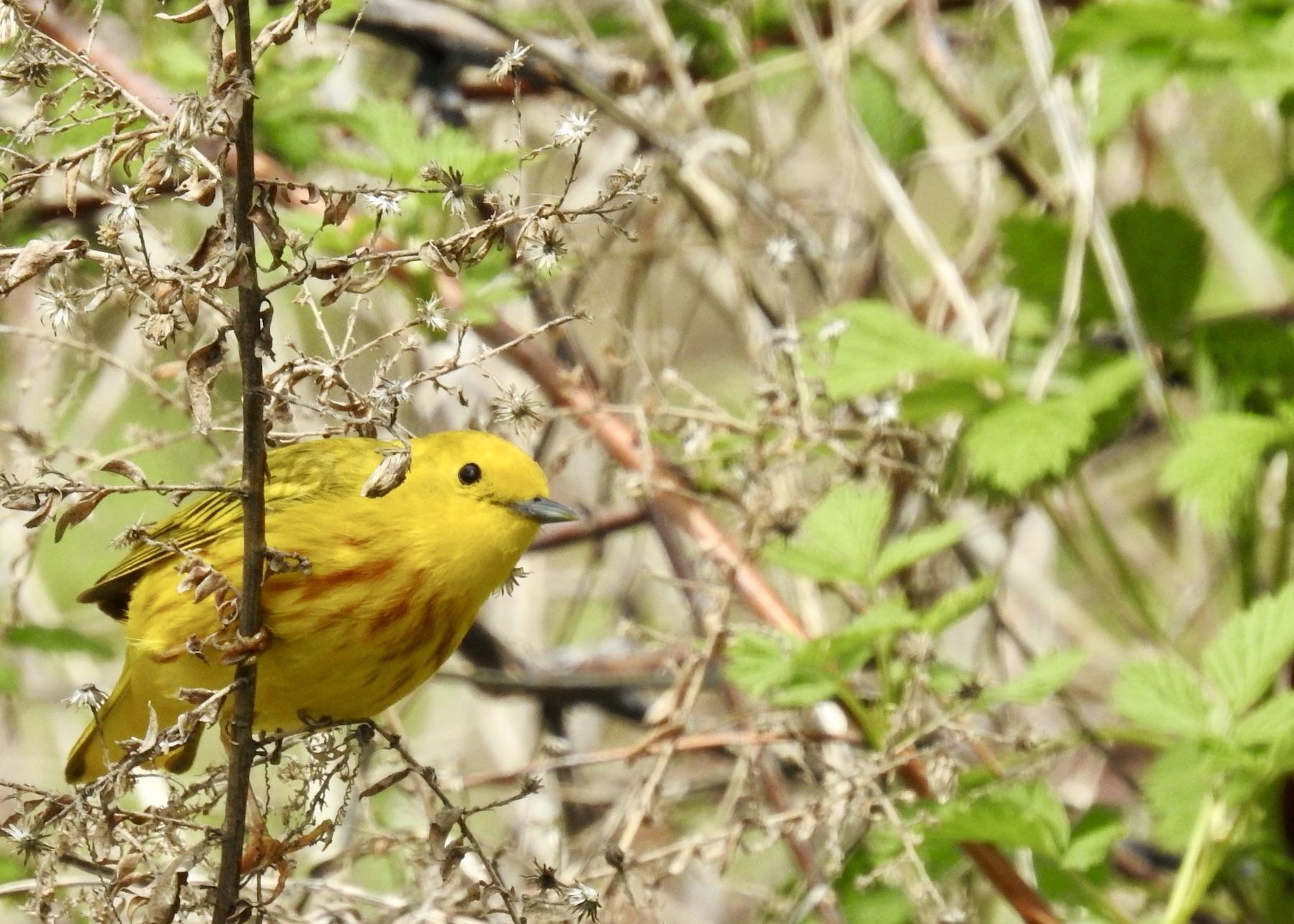
Point Pelee National Park is known for its array of warblers. The Yellow Warbler, although common, is still beautiful/Jennifer Bain
Celebrating The Songbird Migration At Point Pelee
By Jennifer Bain
As the sun sinks without fanfare over the southernmost tip of mainland Canada, the nocturnal and normally elusive American Woodcock makes his presence known with a strange, repetitive and decidedly nasal sound.
“Blowing farts through the nose” is how Pete Read, a birding guide and retired teacher, describes it, and that’s much more memorable than the “nasal beezp” offered up in his bird book, or the “low, nasal peen” in mine.
Whatever you call it, the forest-dwelling woodcock makes this singular sound to attract females during the spring mating season. He studiously ignores the disruption of several dozen gawking birders gathered on a footpath off the DeLaurier Homestead & Trail parking lot in Point Pelee National Park. It’s the Festival of Birds and word has quietly spread that a determined woodcock comes to this grassy clearing every night like clockwork 20 minutes after sunset.
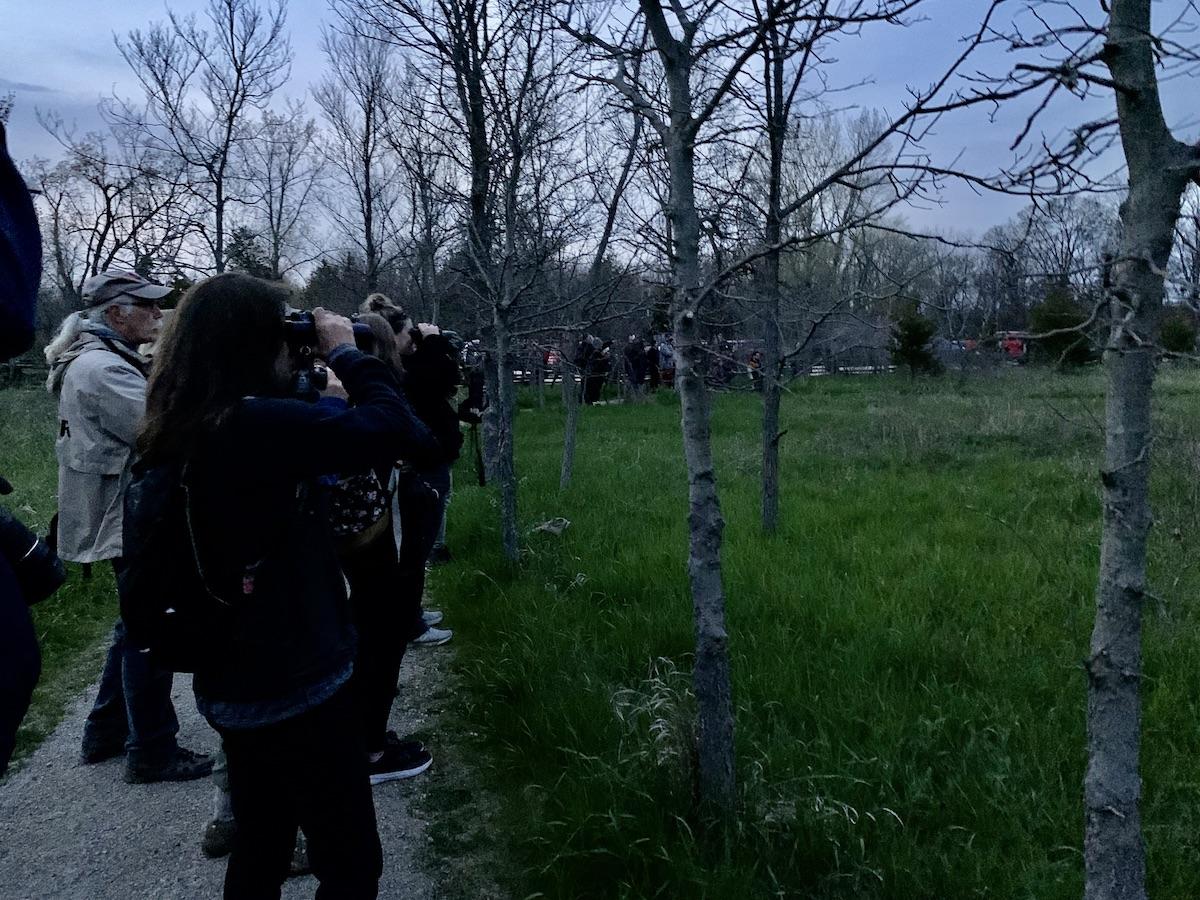
Watching the birders watch an American Woodcock's unusual courtship ritual at Point Pelee's Festival of Birds/Jennifer Bain
“The mating ritual is very, very weird,” says Read. “And the male is polygamous, so the best males get all the girls.”
It’s already too dark to see the woodcock shuffling around the grass making these low-pitched beeping calls and I don’t have binoculars, so I put down my camera and focus on listening.
The rhythmic, Daffy Duckesque beeps happen every few seconds for several minutes before stopping suddenly. That’s when the crowd gasps as the lonely woodcock skyrockets upwards and circles the clearing like an acrobatic maniac — or an avian volcano — making a whole other hard-to-describe “chittering” sound.
This peculiar member of the sandpiper family soon dives back to Earth, landing close to where he took off, hoping “the girls” have noticed his display flight and will join him. Alas, they don’t, so he repeats his delightful courtship ritual.
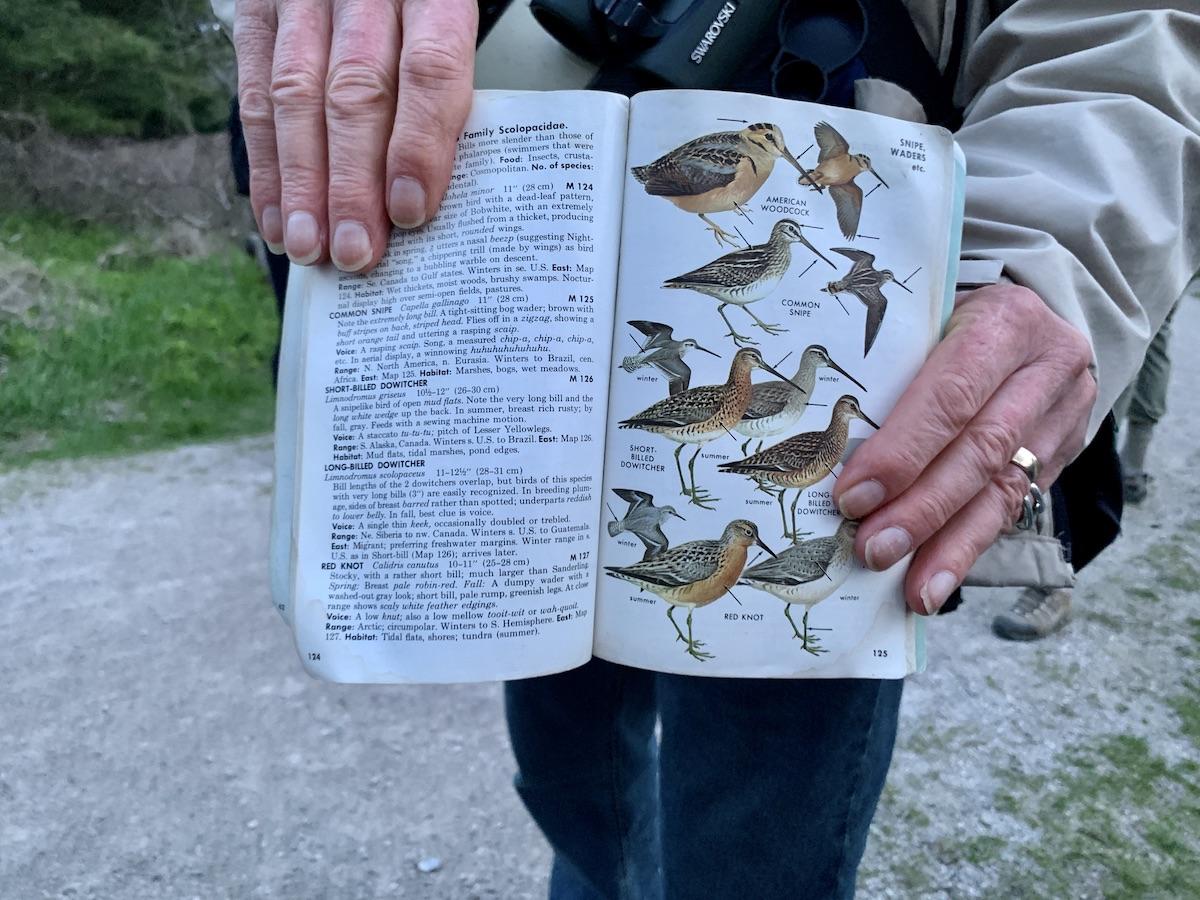
Birding guide Pete Read shows the woodcock page of his bird book/Jennifer Bain
“It shouldn’t take this long,” whispers Read. “There must be no females nearby. See how puffy he is? He really puffs himself up.”
How Read can make out anything in the dark is beyond me, but then again, he is a long-time naturalist who leads for Worldwide Quest and Quest Nature Tours. Tonight, though, Read is leading a dozen of us festival goers on a two-hour twilight birding hike.
It’s the first live Festival of Birds in pandemic times and it highlights the “wonders of the marsh” and names the Green Heron as bird of the year. The $35 ($28 USD) guided hikes organized by Friends of Point Pelee are all but sold out for the Apr. 30 to May 23 bucket list birding event.
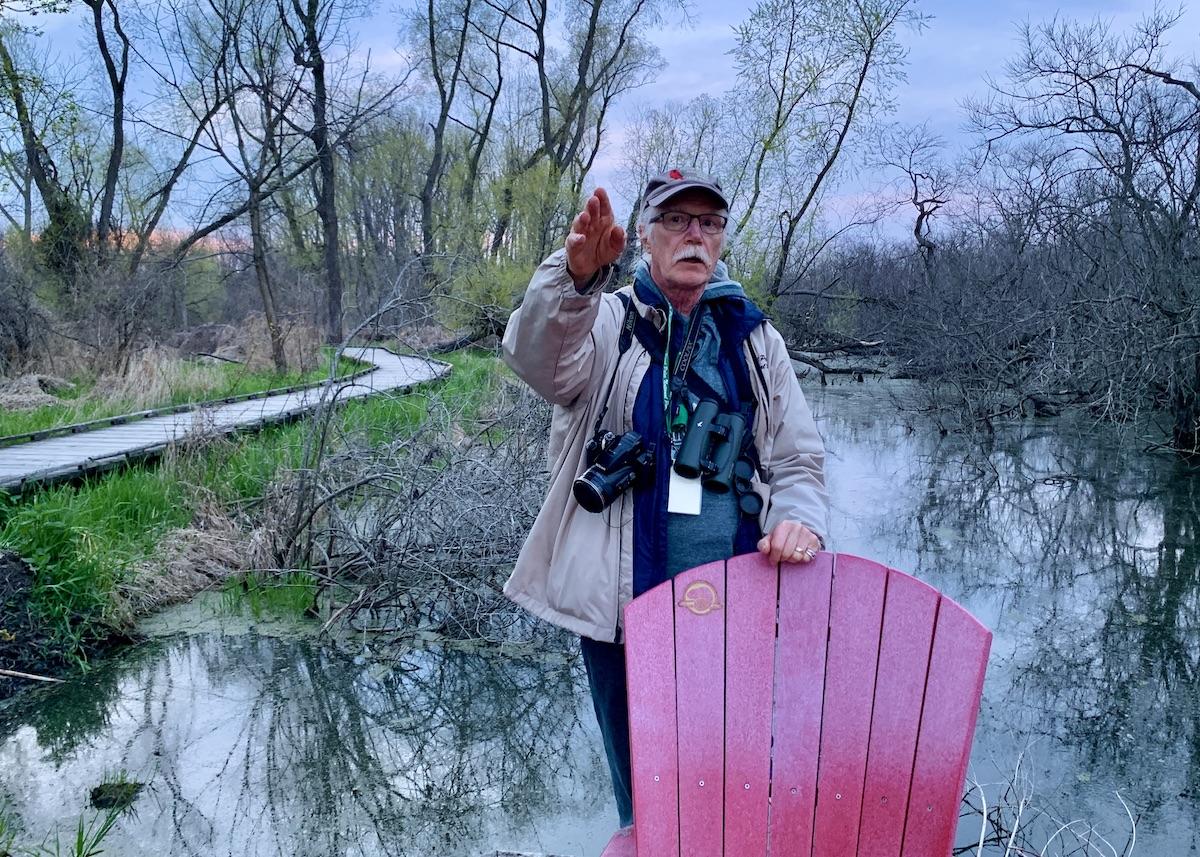
At dusk in Point Pelee, guide Pete Read takes birders down a trail near the marsh/Jennifer Bain
Established in 1918, Point Pelee is Canada’s second smallest national park and the first established for conservation purposes. It’s in Leamington, an hour southeast of Detroit, in an ecological region called the Carolinian zone (also known as the eastern deciduous forest) and boasts five ecosystems — a Lake Erie and sand spit savannah, marsh, swamp forest, dry forest and beach.
The park, at the crossroads of two major North American migratory flyways, is a famed migration spot for songbirds and monarch butterflies. The spring songbird migration — which gets more attention than the fall one — typically progresses from March to June in intermittent waves, a pattern unique to eastern North America.
Parks Canada says most of the songbirds that pass through are nocturnal migrants. When they find themselves over Lake Erie near sunrise, they look for the nearest point of land to rest and refuel after flying up to 200 kilometres (125 miles) a night. Since the peninsula here extends 20 kilometres (12 miles) into Lake Erie, it's often the first point of land the birds see, and an area called the Tip (the literal southernmost point of mainland Canada) is often buzzing in the early morning.
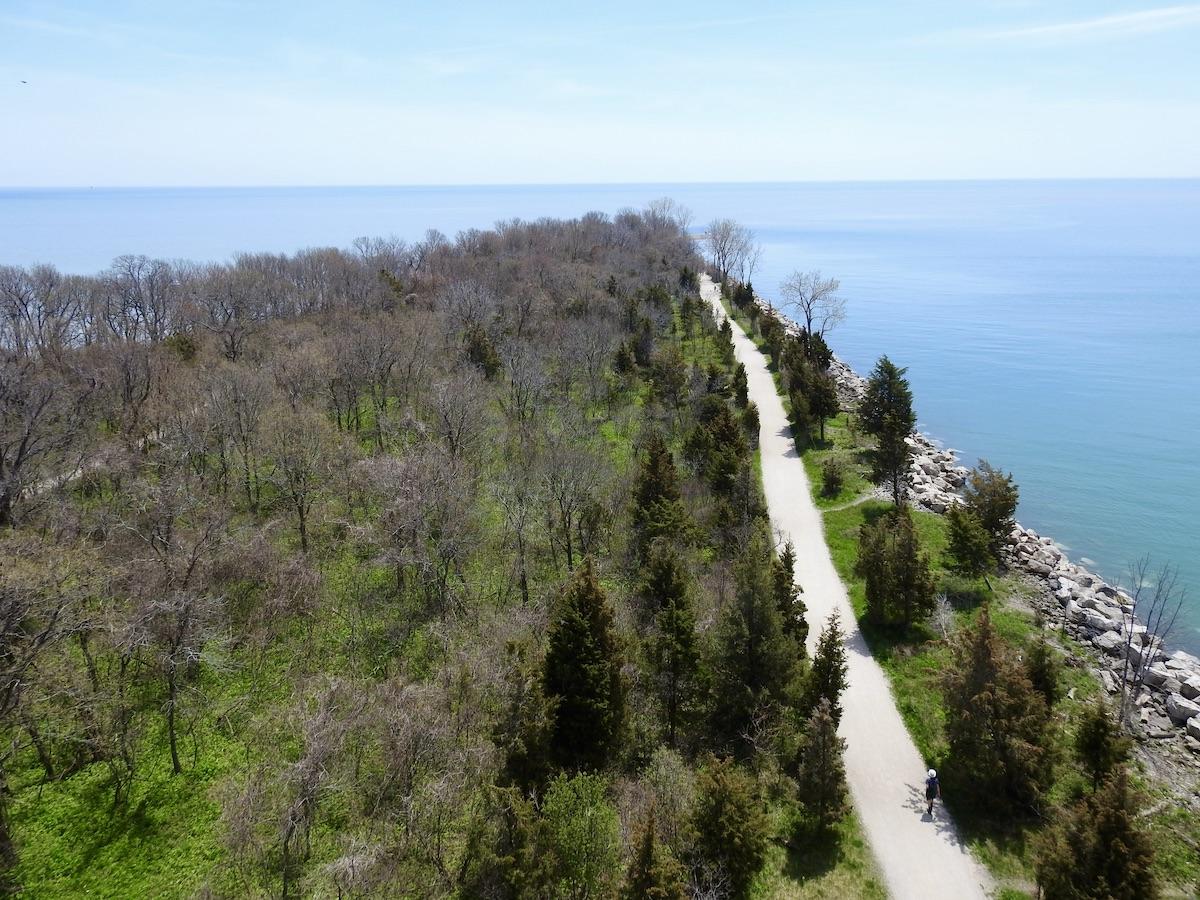
A view from the observation tower of Point Pelee's "Tip" and Lake Erie/Jennifer Bain
I’m not quick enough to nab reservations for one of the 24 oTENTiks (a cabin/tent hybrid) in the park’s Camp Henry, so settle into the Best Western Plus Leamington Hotel & Conference Centre instead. It’s five minutes from the park gate and breakfast starts at 5 a.m. to accommodate birders who want to be out of the hotel before sunrise.
When I arrive at Point Pelee from Toronto just before noon on a mid-festival Wednesday, there’s just enough time to score a fundraising “Birdseed” cookie sold by the not-for-profit Friends of Point Pelee at the daily Birder Breakfast before a free talk by Parks Canada resource conservation technician Emma Burbidge.

Selling "Birdseed" cookies helps the Friends of Point Pelee raise money during the Festival of Birds/Jennifer Bain
In the visitor center's theater, Burbidge details what’s being done to restore the health of the 1,000-hectare (2,470-acre) freshwater marsh that covers two-thirds of the park. The marsh — a Ramsar Wetland of International Significance — is home to many species at risk, important migratory birds, reptiles, amphibians, fish and plants.
But the marsh has also been plagued by several invasive species — Narrow-leaved Cattail, Blue Cattail and European Common Reed (Phragmites australis australis) — that grow aggressively, outcompete native species and create dense monocultures. This causes a decrease in open water and a drop in habitat diversity.
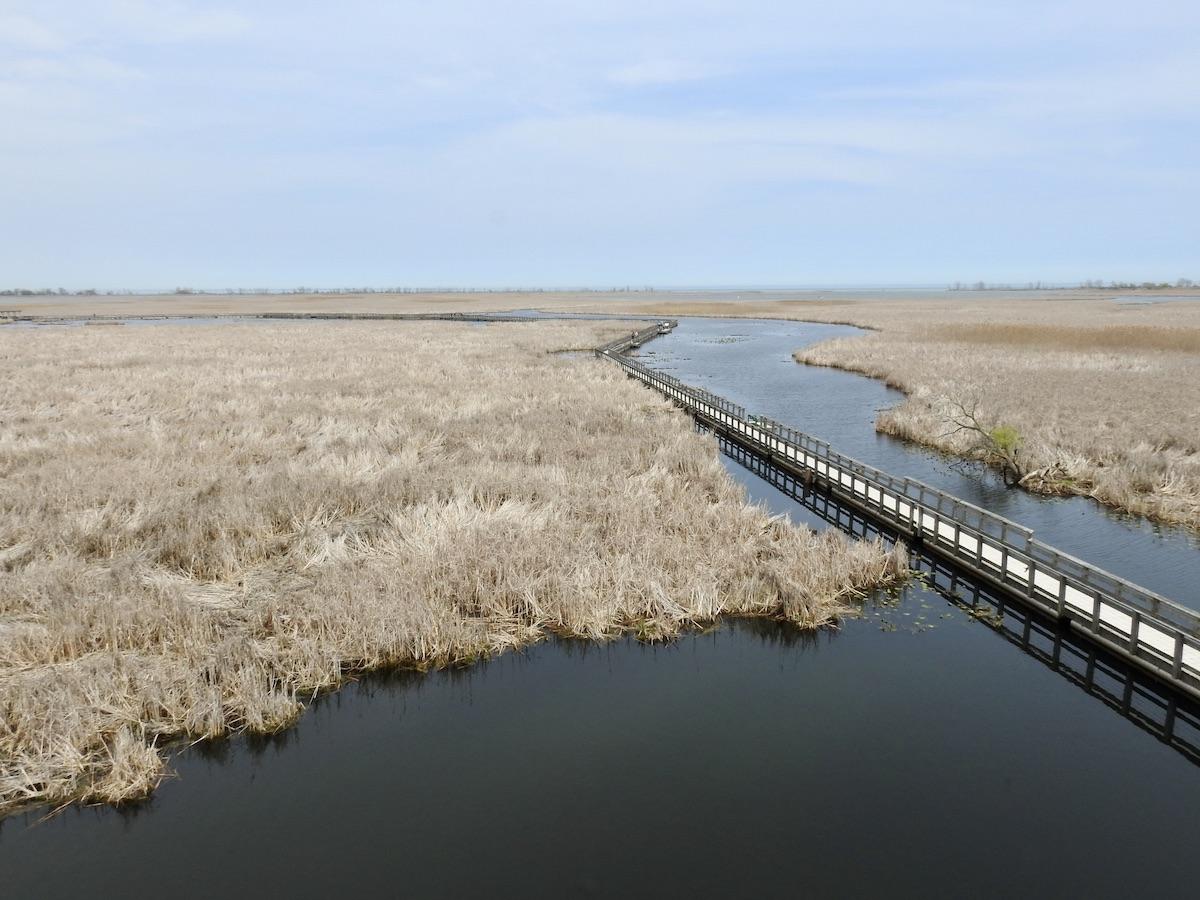
A view of the Marsh Boardwalk Trail at Point Pelee National Park in May/Jennifer Bain
Burbidge offers an overview on three years of marsh restoration work. “Big, floating cattail mats” are cut by machine and phragmites by two tools she has on display — a hedge trimmer and a raspberry cane cutter. Park staff scout these invasive patches to look for nests before doing any cutting. “What we’re learning is that it’s an effective control method,” says Burbidge, “but it’s very labour intensive.”
She points us to the Shuster and Marsh Boardwalk trails to see the work they’ve been doing. When I take the one-kilometre (half-mile) floating boardwalk loop around the marsh, I spot Midland Painted Turtles, a Lake Erie Watersnake, Barn Swallows galore and even a swan that is too far away to identify.

A Lake Erie Watersnake is spotted at the Marsh Boardwalk Trail/Jennifer Bain
You don't have to be a hardcore birder to enjoy this festival. I’m lapsed/novice birder and so while the 2022 festival’s 100 Species Challenge is beyond my abilities (though the commemorative pin featuring a Least Bittern is enticing), I stick to the free talks and guided hikes and soak in all the expert advice.
“Ontario’s best-known birdwatcher” — retired school principal Jean Iron — does a workshop called “Spotlight on Shorebird ID” and details regular spring migrant and breeding shorebirds to watch for as well as rarer species that migrate through the area to their Arctic breeding grounds.
“I hope everybody is having a good time,” Iron says to the crowd. “It is the most wonderful place here.”
She enthuses about plovers, godwits, peeps, avocets, phaleropes and curlews/whimbrels. Musing about how she’s met people from all over Canada, Iron shares how one Alberta birder was thrilled to see a White-winged Scoter, which is common in Toronto.
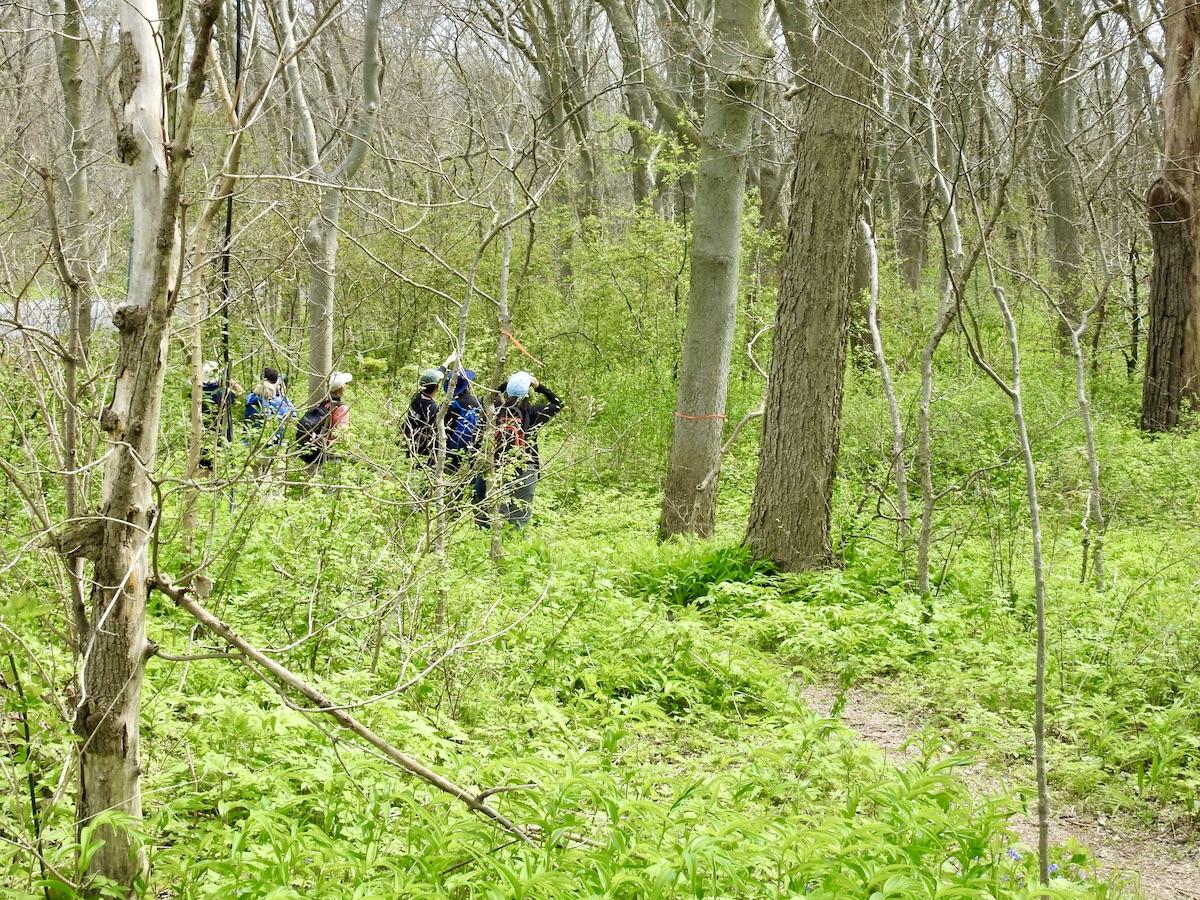
Eager birders gather on a guided birding hike during the Festival of Birds/Jennifer Bain
“Different birds matter to different people,” says Iron, before remembering to tip off everyone to news that the woodcock is “still displaying fantastically at dusk” by the DeLaurier trail parking lot.
While I don’t get any photos of said woodcock, I do score woodcock earrings made by Pennsylvania's Jabebo Studio and sold at one of the park’s gift shops. I also select Yellow Warbler earrings in honour of what’s apparently one of the park’s most common birds.
Yellow Warblers are a cinch to spot and photograph on the North End Birding Hike from Northwest Beach guided by Aaron Brisebois, who has arrived from Gatineau, Quebec to help out.
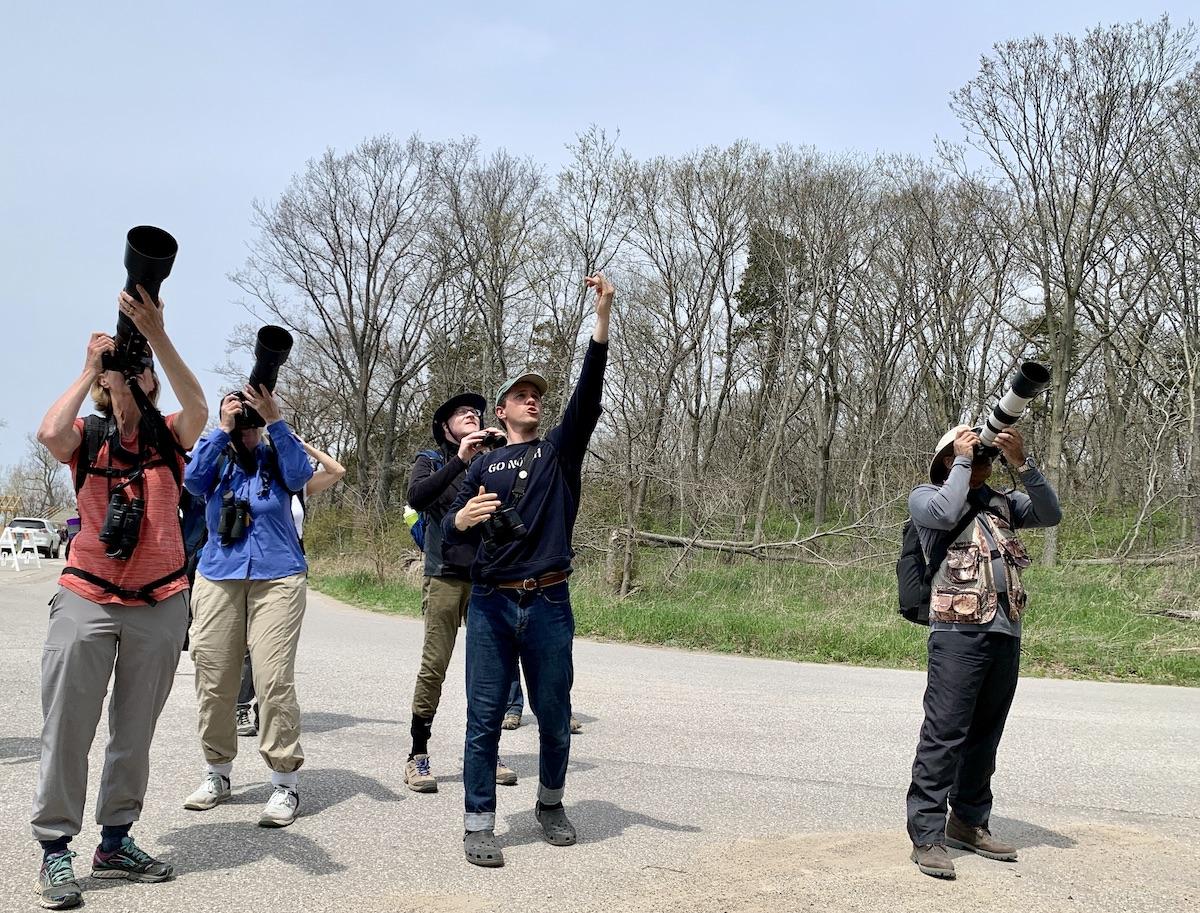
On a guided birding hike during the Festival of Birds, Aaron Brisebois (front, centre) points out an endless array of birds/Jennifer Bain
Like a sports announcer calling out all the moves during a hockey game, Brisebois keeps up a constant chatter about everything that’s around us today. Blackburnian Warbler. A Barn Swallow that “just dropped a fecal sac.” Eastern Kingbird. Turkey Vulture. Baltimore Oriole. Blue-gray Gnatcatcher. Eastern Wood-Pewee. Wilson’s Warbler. Warbling Vireo.
“This is a good start and we haven’t even really got on a trail yet,” says a pumped up Brisebois. That’s before he spots a White-crowned Sparrow, Swainson’s Thrush and Black-throated Blue Warbler, and before he hears Sandhill Cranes in the distance.
“Getting used to hearing the sounds of birding,” admits the guide, “is a whole other thing.”
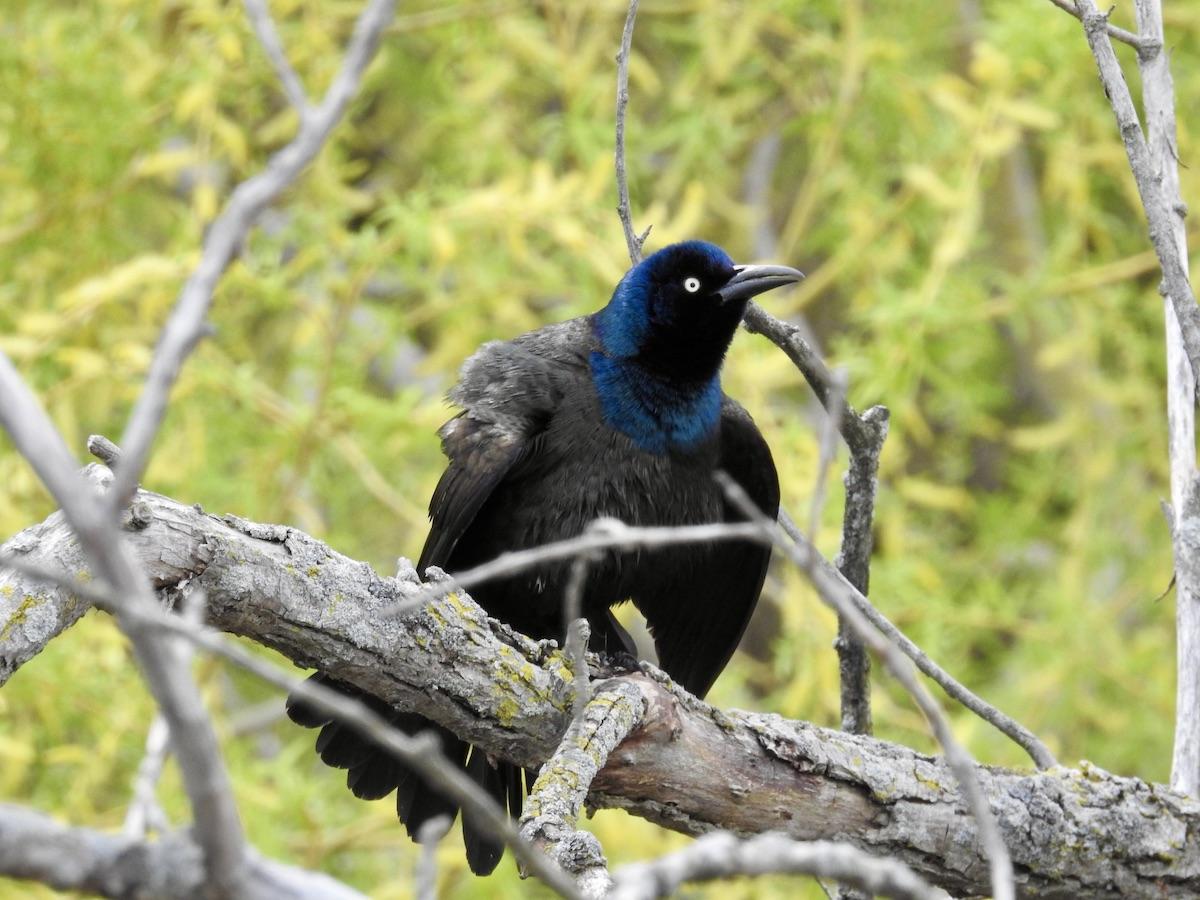
The Common Grackle isn't beloved by birders, but does stay still for a photo/Jennifer Bain
Birders may seem to move slowly, but birding is more fast-paced than you might think. Without a checklist, "there’s no way" Brisebois could remember all the species he sees at Pelee in a day. Sometimes, he suggests, you have to just focus on one bird.
That’s what I do when I’m being guided by Read, an hour or so before the unforgettable woodcock, when a Carolina Wren has a prolonged dirt bath along a forest trail.
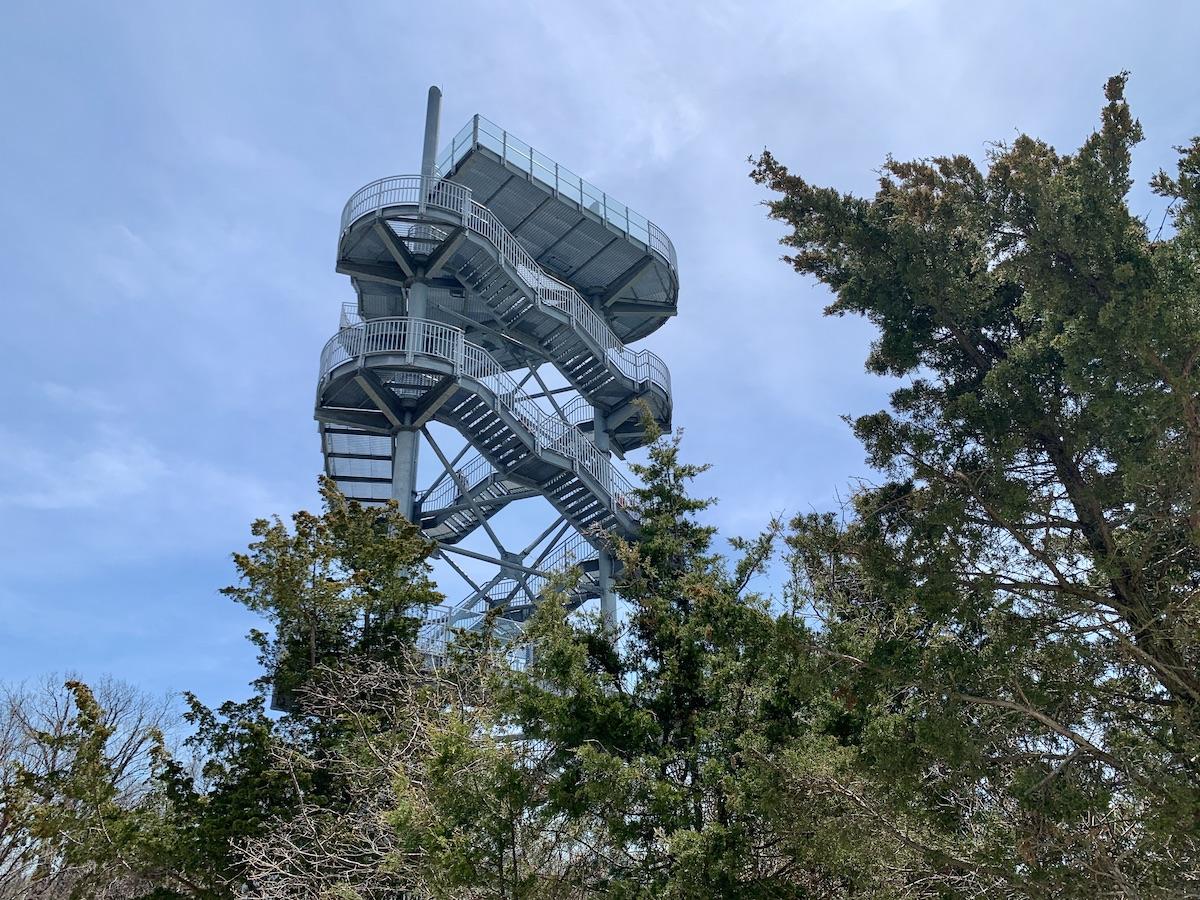
The observation tower at "the Tip" area of Point Pelee National Parks allows for tree canopy birding/Jennifer Bain
And that’s what I do after taking the seven-minute shuttle down to “the Tip” and spotting a telltale flash of red in the trees just before getting off.
Two adult male Scarlet Tanagers, with brilliant red bodies and black wings and tails, skulk about the trees and are easily spotted since the leaves aren't out yet. The showy songbirds in their breeding plummage flit about restlessly but are remarkably still there when I climb the nearby 24-metre-high (80-feet) observation tower and look back down for some final “tree canopy birding."

Add comment